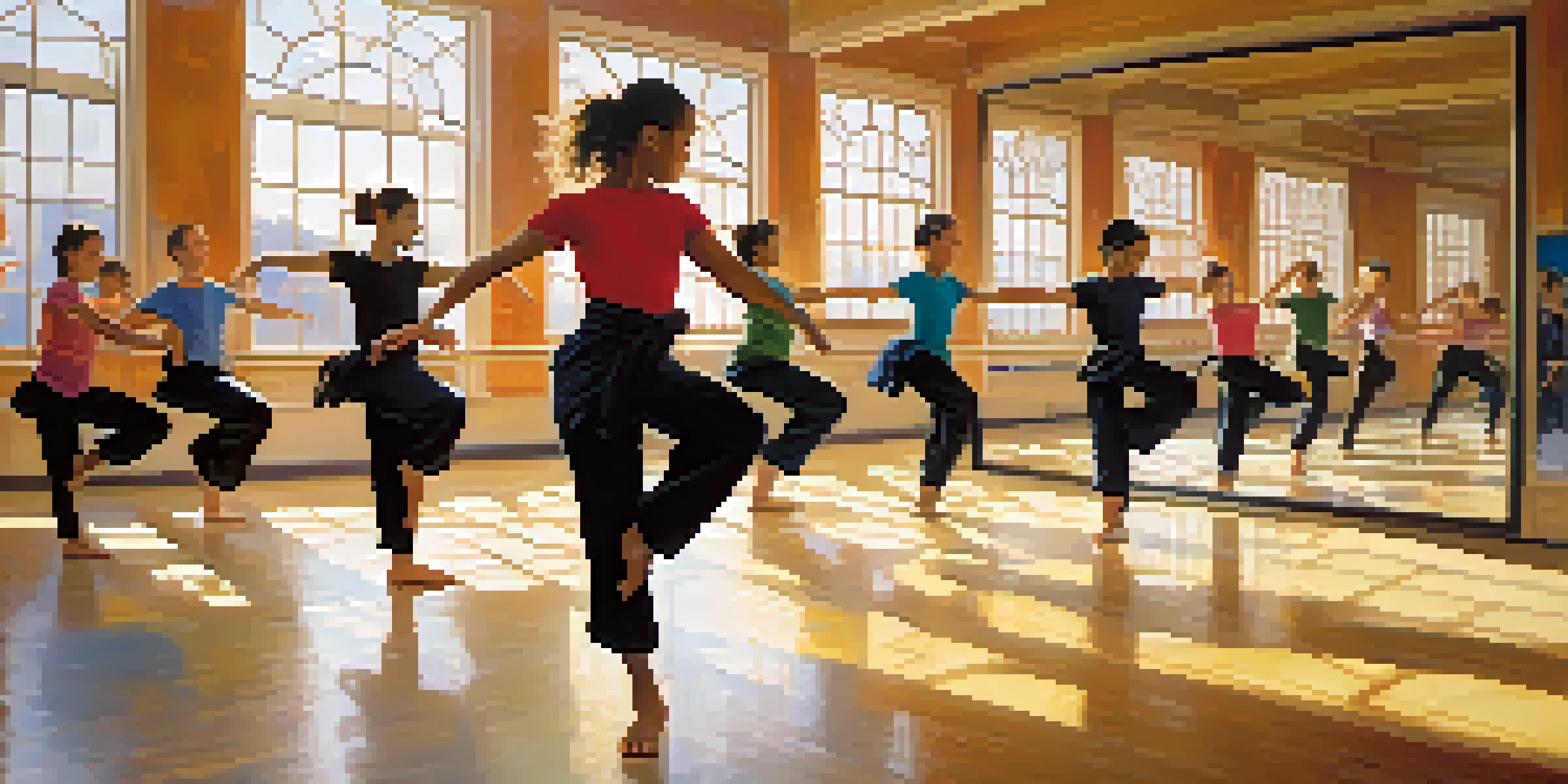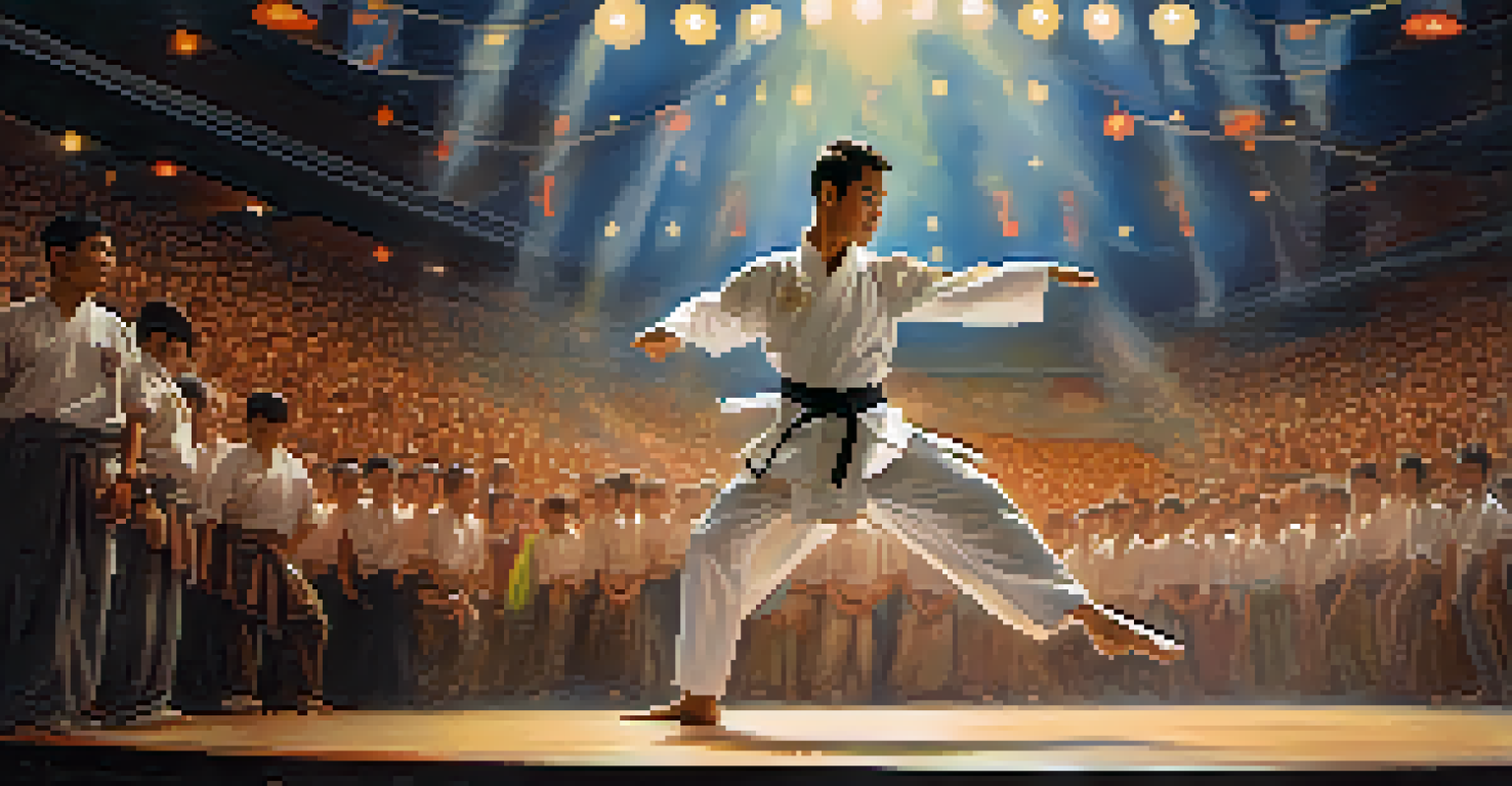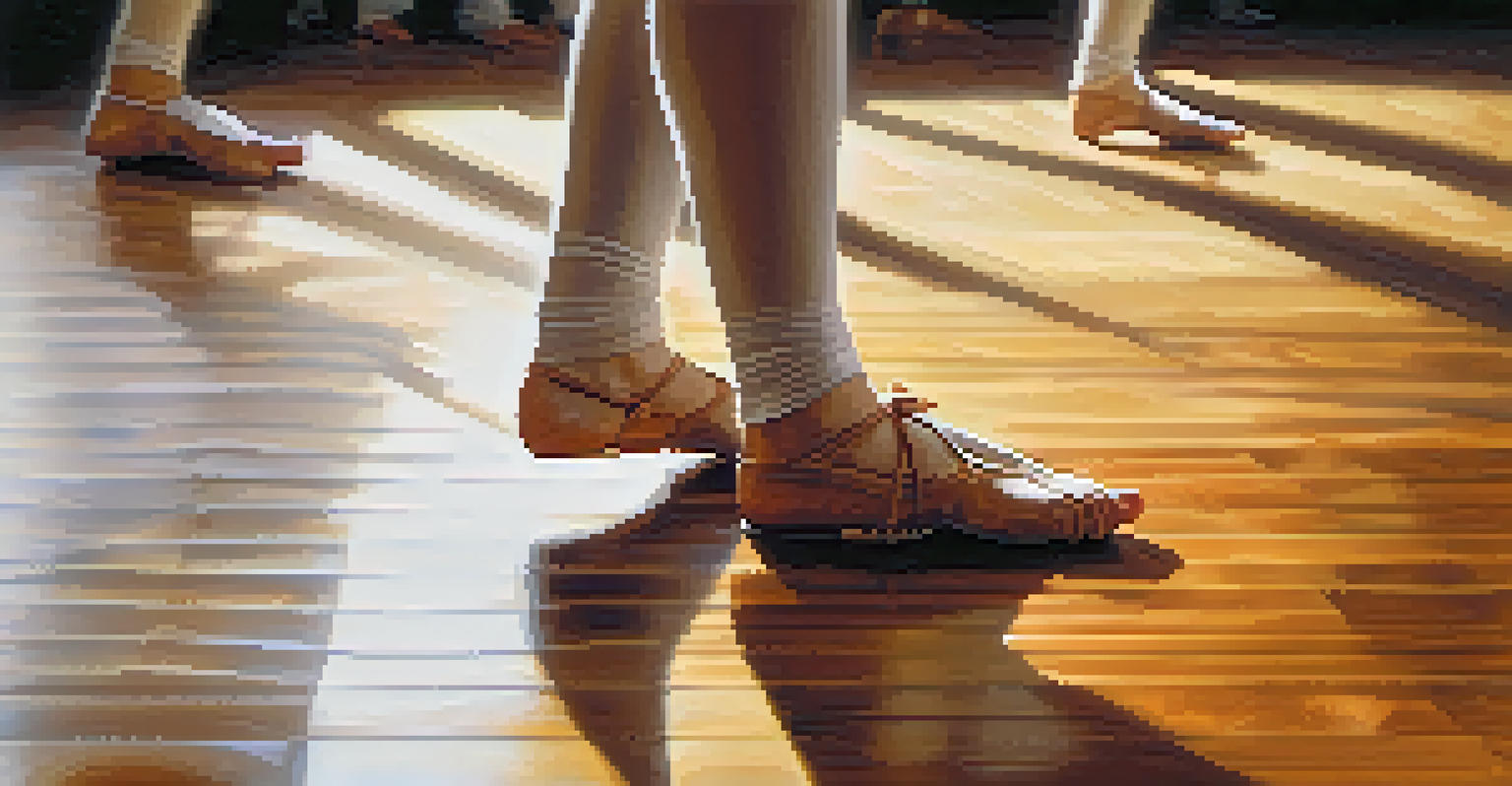Integrating Martial Arts into Dance Education Programs

Understanding the Benefits of Martial Arts in Dance
Integrating martial arts into dance education can unlock a variety of benefits for students. It promotes physical fitness, flexibility, and strength, all essential components of dance performance. Additionally, martial arts techniques can enhance coordination and body awareness, which are vital in both dance and martial arts.
Martial arts is not about the physical strength, but about mental strength and discipline, both of which are essential for dance.
Moreover, the mental discipline developed in martial arts can improve focus and concentration in dancers. This focus is crucial when learning complex choreography or performing under pressure. Students can also gain self-confidence through mastering martial arts skills, translating that confidence into their dance performances.
Finally, martial arts often emphasizes respect and teamwork, fostering a positive learning environment. This collaborative spirit encourages students to support one another, creating a community within the dance program. By blending these two disciplines, educators can cultivate well-rounded dancers who excel both physically and mentally.
Incorporating Martial Arts Techniques into Dance Classes
To effectively integrate martial arts into dance classes, educators can start by introducing basic martial arts movements. Techniques such as kicks, punches, and stances can easily complement dance routines. For instance, a high kick in martial arts can enhance a dancer's leg extension, adding flair to their performance.

In addition to physical techniques, incorporating martial arts philosophies can enrich the dance curriculum. Concepts like mindfulness, breathing techniques, and visualization are common in martial arts and beneficial in dance. Teaching students to visualize their movements can help them perform with greater intention and artistry.
Boosting Physical and Mental Skills
Integrating martial arts into dance enhances physical fitness, coordination, and mental discipline, benefiting overall performance.
Lastly, educators can design hybrid classes that blend elements of both disciplines. For example, a class could focus on choreography that incorporates martial arts sequences, allowing students to experience the fusion of styles. This hands-on approach keeps students engaged and excited about their learning journey.
Building a Curriculum That Emphasizes Both Disciplines
When developing a curriculum that combines martial arts and dance, it’s essential to create a structured framework. This framework should highlight the core principles of both disciplines while allowing for creative exploration. Establishing clear learning objectives ensures that students understand what they are working towards.
Dance is the hidden language of the soul, and martial arts teaches us to express that language with strength and grace.
A well-rounded curriculum could include separate modules focusing on the technique, choreography, and performance aspects of both martial arts and dance. By alternating between these modules, students can appreciate the unique contributions of each discipline. This can also help them see how skills learned in martial arts can enhance their dance abilities.
Additionally, incorporating guest instructors from martial arts backgrounds can provide students with new perspectives. These experts can offer specialized knowledge and techniques, enriching the educational experience. Overall, a thoughtfully designed curriculum fosters a deeper understanding of the interconnectedness of martial arts and dance.
Fostering Creativity Through Movement Exploration
One of the most exciting aspects of integrating martial arts into dance education is the potential for creativity. Both disciplines encourage self-expression, but when combined, they can lead to innovative movement exploration. Students can experiment with how martial arts techniques can be adapted into dance sequences, sparking their imagination.
Encouraging improvisation can also be a valuable tool in this creative process. Students can be invited to create their own choreography by blending martial arts moves with dance styles. This not only enhances their creativity but also fosters a sense of ownership over their learning.
Fostering Creativity and Ownership
Combining martial arts with dance encourages students to explore movement creatively, leading to a greater sense of ownership in their learning.
Moreover, showcasing student-created pieces in performances can further motivate them. When students see their unique interpretations of movement celebrated, it reinforces their confidence and inspires their peers. This culture of creativity and collaboration can transform the learning environment in dance education.
Enhancing Performance Skills through Martial Arts Training
Performance skills are critical in both dance and martial arts, making their integration particularly beneficial. Martial arts training can help dancers develop stronger stage presence and more dynamic movements. Techniques like precise timing and powerful execution learned in martial arts directly translate to captivating dance performances.
Furthermore, the discipline required in martial arts can lead to improved rehearsal habits. Dancers who train in martial arts often exhibit greater dedication to practice and a better understanding of physical limitations. This awareness can help prevent injuries, allowing dancers to perform at their best.
Lastly, martial arts often includes performance elements, such as kata or forms, which can inspire dance choreography. By observing how martial artists perform their routines, dancers can glean insights into staging and audience engagement. This cross-pollination of techniques ultimately elevates the dancers' performance quality.
Building Discipline and Resilience Through Training
Both martial arts and dance require a high level of discipline, making their integration a natural fit. The structured training of martial arts teaches students the importance of consistent practice and perseverance. This discipline can then be applied to their dance training, helping them push through challenges and setbacks.
Resilience is another key attribute that students can develop through this integrated approach. In martial arts, practitioners often face obstacles, whether it's mastering a difficult technique or sparring with a partner. Learning to overcome these challenges builds mental toughness, which is invaluable in dance, especially during auditions or performances.
Building Community and Support
The integration of martial arts and dance promotes respect and teamwork, creating a supportive community that enhances motivation and collaboration.
Ultimately, fostering discipline and resilience not only shapes better performers but also cultivates life skills. Students learn to set goals, work hard towards achieving them, and bounce back from failures. These qualities will serve them well beyond the dance studio and martial arts dojo.
Creating a Supportive Community of Learners
One of the most rewarding aspects of integrating martial arts into dance education is the community it fosters. Both disciplines promote respect, teamwork, and camaraderie among students. This shared learning experience can create lasting friendships and a sense of belonging within the program.
Engaging in activities that require collaboration, such as partner drills or group choreography, helps strengthen these bonds. Students learn to communicate effectively and support one another in their training, creating a positive atmosphere. This sense of community can enhance motivation and accountability among peers.

Moreover, hosting events that celebrate both martial arts and dance can further solidify this community. Workshops, showcases, or friendly competitions allow students to showcase their skills and learn from one another. These activities not only build relationships but also create cherished memories that enrich their educational experience.